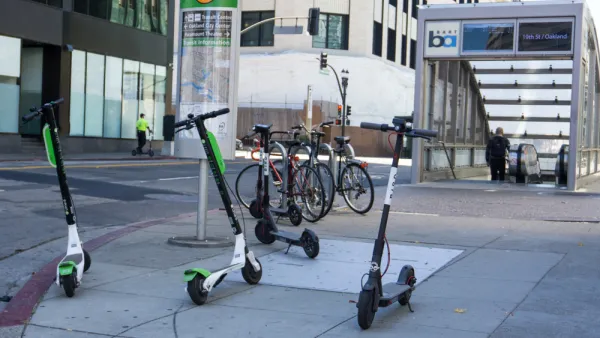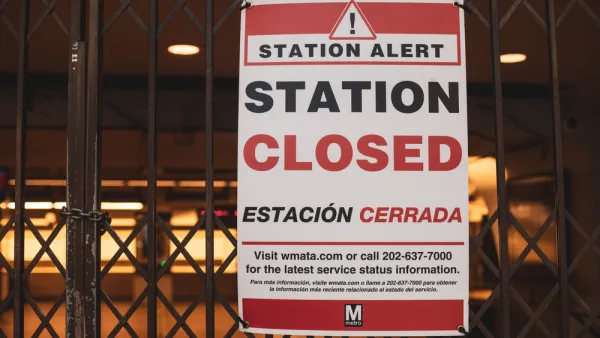Eric Jaffe dives into evidence that bike share should be considered an essential component of a multi-modal public transit network.
Jaffe's article focuses on a study by Elliot Martin and Susan Shaheen, first mentioned in an article by Gabe Klein earlier this month. The study, "Evaluating public transit modal shift dynamics in response to bikesharing: a tale of two U.S. cities," evaluates survey data from Washington D.C. and Minneapolis "to explore who is shifting toward and away from public transit as a result of bikesharing," as described by the study's abstract.
According to Jaffe's summation, "the maps suggest that bike-share, at least in Minneapolis and Washington, is making the entire multimodal transit network more efficient. For short trips in dense settings, bike-share just makes more sense than waiting for the subway—it's 'substitutive of public transit,' in the words of Martin and Shaheen.
Where Klein took the findings of the study as evidence that cities should rethink transit-oriented development around multi-modal facilities such as bikeshare, Jaffe suggests that we should expand our definition of public transit to include publically funded bikeshare.
According to Jaffe's argument, "with increasing evidence that bike-share can expand or support public transit networks, the case for improving these systems with taxpayer dollars becomes much stronger."
FULL STORY: The Most Persuasive Evidence Yet that Bike-Share Serves as Public Transit

National Parks Layoffs Will Cause Communities to Lose Billions
Thousands of essential park workers were laid off this week, just before the busy spring break season.

Retro-silient?: America’s First “Eco-burb,” The Woodlands Turns 50
A master-planned community north of Houston offers lessons on green infrastructure and resilient design, but falls short of its founder’s lofty affordability and walkability goals.

Delivering for America Plan Will Downgrade Mail Service in at Least 49.5 Percent of Zip Codes
Republican and Democrat lawmakers criticize the plan for its disproportionate negative impact on rural communities.

Test News Post 1
This is a summary

Test News Headline 46
Test for the image on the front page.

Balancing Bombs and Butterflies: How the National Guard Protects a Rare Species
The National Guard at Fort Indiantown Gap uses GIS technology and land management strategies to balance military training with conservation efforts, ensuring the survival of the rare eastern regal fritillary butterfly.
Urban Design for Planners 1: Software Tools
This six-course series explores essential urban design concepts using open source software and equips planners with the tools they need to participate fully in the urban design process.
Planning for Universal Design
Learn the tools for implementing Universal Design in planning regulations.
EMC Planning Group, Inc.
Planetizen
Planetizen
Mpact (formerly Rail~Volution)
Great Falls Development Authority, Inc.
HUDs Office of Policy Development and Research
NYU Wagner Graduate School of Public Service




























